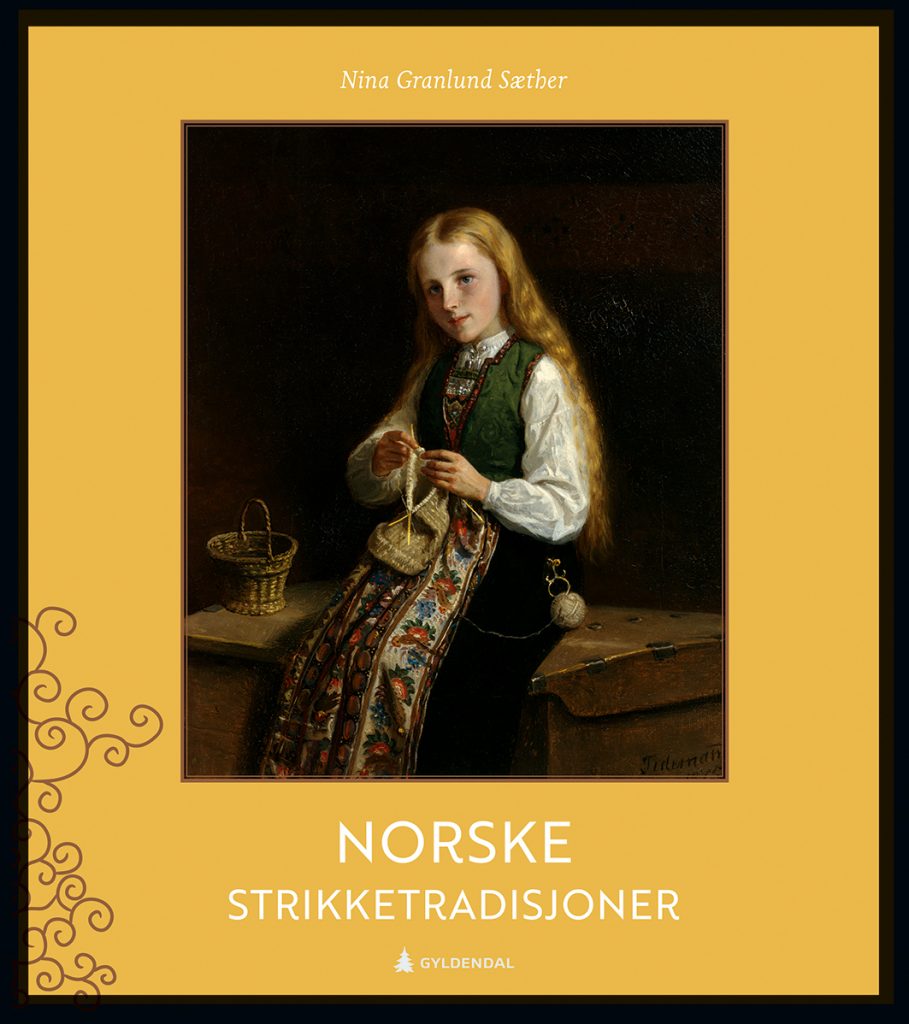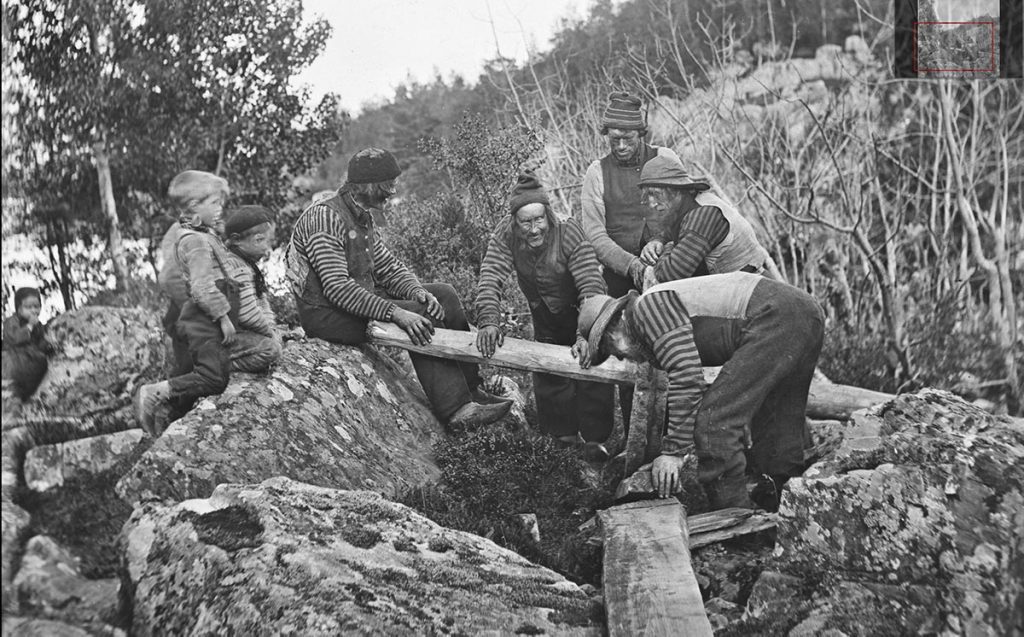 “Norske strikketradisjoner” is the title of Nina Granlund Sæther’s astonishing book, published by Gyldendal last autumn. Nina has dived down into history hunting for traces on how the knitting technique came to Norway, spread and became part of our national history and identity. She documents with text, numerous photos and textiles how Norwegians have dressed with layers of knitted garments from underwear to outerwear. Even back in 1865 the theologist and sociologist Eilert Sundt pointed out that the technique was useful for the poor and comfortable for the nobles, as well as equally relevant for young and old people.
“Norske strikketradisjoner” is the title of Nina Granlund Sæther’s astonishing book, published by Gyldendal last autumn. Nina has dived down into history hunting for traces on how the knitting technique came to Norway, spread and became part of our national history and identity. She documents with text, numerous photos and textiles how Norwegians have dressed with layers of knitted garments from underwear to outerwear. Even back in 1865 the theologist and sociologist Eilert Sundt pointed out that the technique was useful for the poor and comfortable for the nobles, as well as equally relevant for young and old people.
From the foreword, I have chosen three paragraphs that I have translated into English: “Textiles have always fascinated me. I learnt to knit before the age of five, and every since I have embraced everything related to knitting – whether it was new patterns and colourful yarns, or the story about a mitten or a pair of kneelength stockings for men with holes. When I at the beginning of 2016 said yes to writing this book, I had no idea what I let me self in for. I thought it would take me one year or so. Well, it was not that easy! The more I discovered, the more sources I found, the more I learnt hence I became even more eager to find more, diving even deeper into the material. This takes time. But oh my, how educational and fun it has been!”
“Many believes that the vikings could knit, but they could only do needle-binding. When you work needle-binding, you sew loops into each other. Hence you have to piece together lengths of yarn instead of using a continuous strand of yarn and that takes a lot more time. The knitting history is surprisingly short. In our own country [Norway] the technique has been known for barely 400 years”.
“I have looked for traces in literature – in everything from large acknowledged printed matters to less known, local historical articles. I have searched for dissertations from universities and colleges, and I have googled for church books and census online. I have flickered through hundreds of index cards and studied thousands of photos, both paintings and photographs. I have also visited museums and exhibitions all over Norway. Sometimes I have even been treasure hunting in museum storages. Hence even the garments themselves have been able to tell their story. Last, but not least, I have met a number of people who have had histories to tell or garments to show off.”
Here is one example; it shows stripy sweaters. You can see eight other photos from the book here: puff.gyldendal.no and inside the book here: Norske strikketradisjoner.
Now why stripes? Nina explains: “Over large parts of Europe seamen wore stripes during the 1800-century. Several artists have documented that stripy sweaters were in ordinary use all over Norway through the 1800-century. From Tysnesøen south of Bergen and Os there exists a number of pictures of stripy sweaters taken by the photo pioneer Knud Knudsen. «Parti fra Tysnesøen» is dated 1865-1875 and shows a group of five men and two boys, in addition to a small child who has sneaked in into the background”. She continues to tell us about the small differences in them and how they are made. See more here: here: puff.gyldendal.no.
All the hundreds of photos in this book with its histories make it a treasure trove but also unlikely to be translated due to the cost of the photo rights. However the Norwegian edition is a treasure for anybody interested in knitting and its history.
I bought my copy directly from Nina, when we were both teaching at the Strikkehelg/Knitting Weekend at Geilo, but you can buy the Norwegian book directly from the publisher Gyldendal or selected book stores in Norway.


